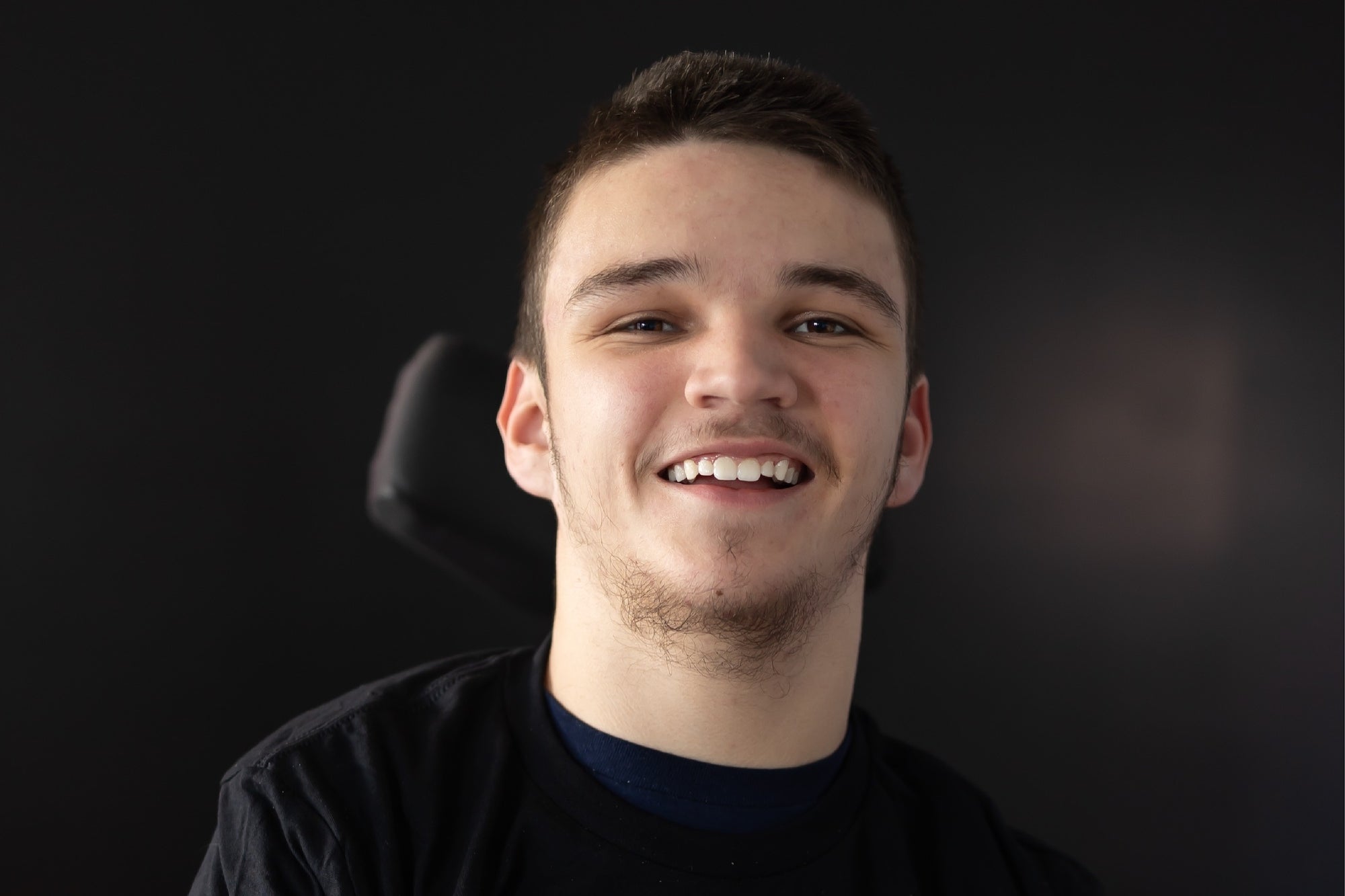She's Been Coding Since Age 7 and Presented Her Life-Saving App to Tim Cook Last Year. Now 17, She's on Track to Solve Even Bigger Problems. Angelina Tsuboi, a full-stack mobile and web developer who also happens to be a pilot, has always been solution-oriented.
By Amanda Breen Edited by Jessica Thomas

Seventeen-year-old Angelina Tsuboi has accomplished more before graduating high school than many will in a lifetime.
The teen, who's been coding since age 7 and knows about 18 programming languages (including her own), has already made a splash in the software world: She's developed numerous apps to make an impact — and was a winner of the Student Swift Challenge at Apple's annual Worldwide Developers Conference (WWDC) last year.
What's more, Tsuboi is also a pilot already using her software skill set to make the aviation industry more accessible and has her sights set on a career in mechatronics, a multidisciplinary field combining computer science, electrical engineering and mechanical engineering. That's on top of her interest in analog astronautics: essentially acting as an astronaut in a simulated space environment.
Entrepreneur sat down with Tsuboi to discuss the inspiration behind her early successes, her experience at WWDC 2022 and her big plans for the future.
Related: This 17-Year-Old Founder Is Helping Farmers Using AI | Entrepreneur
"Whenever I see a problem in the world…I try to find a way to solve it."
Tsuboi got her first taste of programming in a class at school when she was just 7 years old. "The first program I ever built was something very simple and rudimentary — a maze game I coded," she recalls. "And from there I just kept on developing projects."
Inspired by the "amount of impact that applications could have on the world," Tsuboi has always striven to work on projects that address real issues people face.
"Whenever I see a problem in the world, especially if it's prevalent in my own life, I try to find a way to solve it," Tsuboi explains. "I kind of have an engineer's mindset, where whenever I see a problem, I'm not complacent about it. I always want to take action."
One of her apps, Lilac, grew out of that solution-oriented desire to change things for the better. The app provides single parents with up-to-date resources like access to housing organizations, grants, job opportunities and translation support — something Tsuboi wishes had existed when her single mother moved to the U.S. from Japan with three children and "had a lot of problems with the language barrier."
Similarly, Tsuboi drew on her struggle with the "really unintuitive" search for scholarships to fund expensive flight training in Los Angeles to develop her app Pilot Fast Track, which helps aspiring aviators locate scholarships to fund their training. Thousands of people use the app today.
Tsuboi took the same problem-solving mentality into the development of her app CPR Buddy, which was a winner of the Swift Student Challenge last year. She created CPR Buddy as a complementary app to another she'd made for the Apple Watch called Pocket CPR — and it all came out of her experience taking a CPR class online.
"Learning CPR online was a little bit difficult because there are specific things that are really tactile with learning CPR, like compression rate," Tsuboi says. "It's hard to get an intuitive sense of compression rate doing online CPR classes. So I was like, How can I develop a tool that makes learning CPR a little bit easier, and make that process more accessible to people?"
Tsuboi turned to Apple Watch's haptic feedback feature to make that tactile learning possible, using vibrations and visual animations to teach the basics of hands-only and hands-and-breath CPR. One of the biggest challenges lay in the Apple Watch's hardware limitations. Adding a lot of animations and vibrations can overwhelm the device, Tsuboi says. But she overcame that by having much of the code run in the background.
We see Tim Cook walking down the trail of Apple Park, heading towards us. And that was just mind-blowing.
Tsuboi was one of six Swift Student Challenge winners invited to Apple headquarters for last year's WWDC, where she had a chance to see presentations announcing the company's new hardware and software and engage in one-on-one live talking sessions with other developers.
"It was a lot of fun just connecting with people," Tsuboi recalls, "and like-minded people too because the software world is a small niche community, and sometimes it's hard to find other people to connect to. But at WWDC almost everybody is familiar with Apple software and products."
Tsuboi and the other winners had gathered in Apple Park to talk about their app submissions when they got the surprise appearance of a lifetime: the Apple CEO himself.
"We see Tim Cook walking down the trail of Apple Park, heading towards us," Tsuboi says. "And that was just mind-blowing. He sits down right next to me, and we all present our apps to him and talk about our app development experience. That was so awesome, getting to meet the CEO of Apple, and getting to talk to him about how we're all trying to make an impact on the world."
Related: Leadership Lessons From Apple CEO Tim Cook | Entrepreneur
"The career track I want to follow is a little bit varied…software is still going to be a component of what I do."
As Tsuboi looks ahead to the future, she's excited to continue using her software-development skill set to address real-world challenges and branch out into other areas.
"I'm delving a little bit more into cybersecurity," Tsuboi says, "more specifically aerospace cybersecurity, which is a really, really niche field, which I enjoy. And a lot of it is just fast and stimulating, so I've been getting into it."
Tsuboi is also building cybersecurity programs to ensure the cybersecurity of avionics (electronics as applied to aviation) on airplanes. She's built a device and program that use AI to detect spoofing or hacking of airplane radar systems. Additionally, she's built another recent program that serves as a cybersecurity system for satellites.
This summer, Tsuboi will work for NASA, where she'll focus on building aerospace cybersecurity projects. She's also been "diving a little bit into mechatronics development," as she hopes to be a mechatronics engineer when she grows up.
Tsuboi is drawn to mechatronics' multidisciplinary approach. "I like having a holistic and collective skill set because it helps me take a different perspective on problems," she explains, "which is unique in the engineering field because, in engineering, people usually stick to one field."
Related: How This Former NASA Engineer Wants to Make STEM Youth Education More Accessible
Right now, she's working on an open-source, low-cost buoy device for detecting tsunamis.
"Currently, tsunami detection buoys do exist," Tsuboi says, "but they're crazy expensive and they're huge. They usually break within the first year of operation and cost like $500,000. It's ridiculous. So I'm proposing a solution that I'm building right now, which is a compact buoy device that costs less than $200."
Tsuboi hopes to make the devices more accessible to researchers in disadvantaged areas.
Tsuboi's achievements may set her apart from the typical high school student, but, like many graduating teenagers, she does have college on her mind. MIT has been her dream school for a long time, she says, but she's keeping her options open.
"I'm not 100% dead set on it because it's really hard to get in," Tsuboi says. "Regardless, I'm still going to be pursuing my projects professionally. The career track I want to follow is a little bit varied. I'm still going to be building software. I have a couple of apps in development, so software is still going to be a component of what I do, but I'm mostly going to be focusing on mechatronics and analog astronautics."










